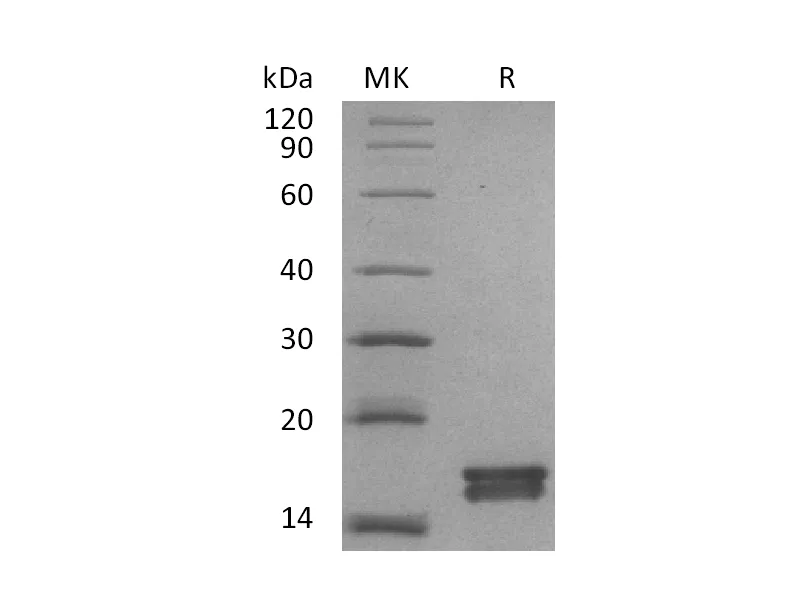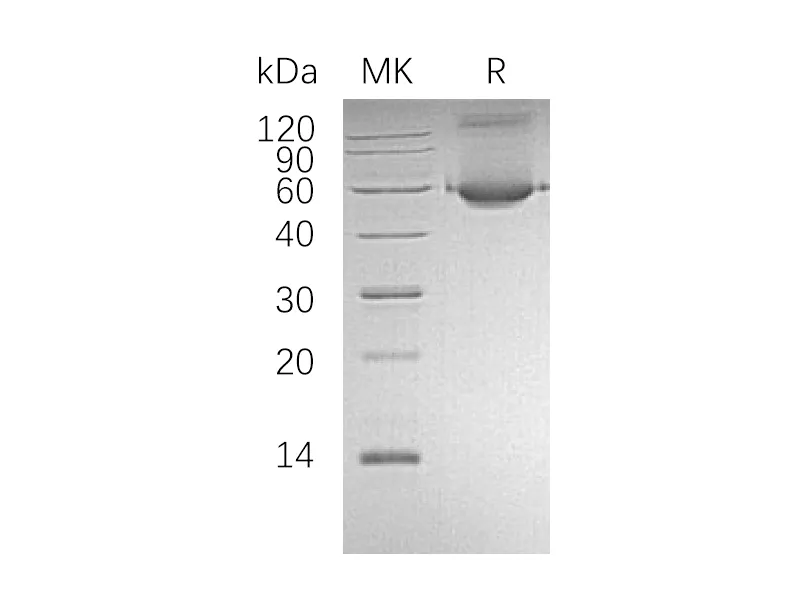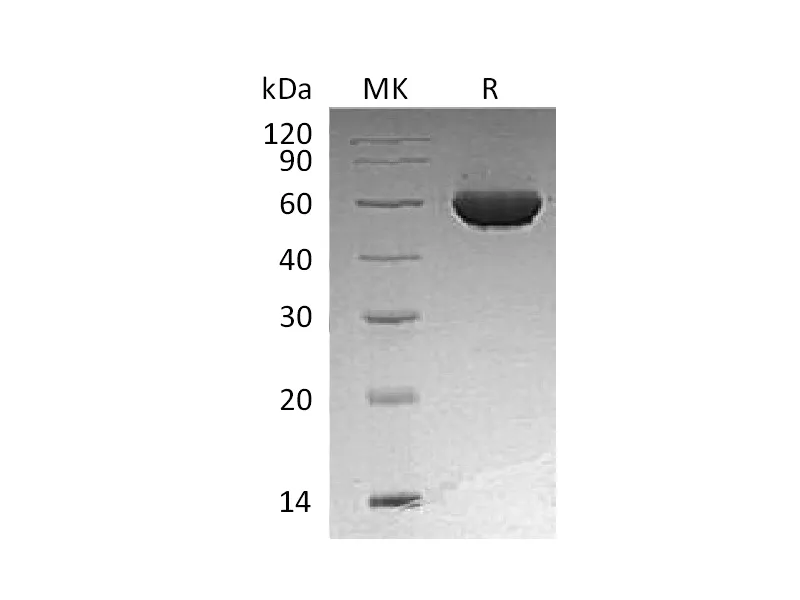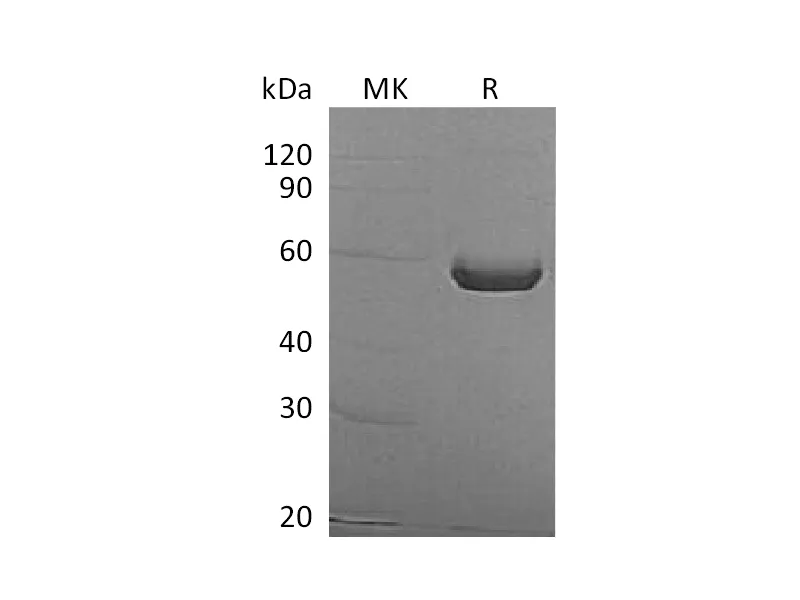Alternative Names
Receptor activator of NF-KB; tumor necrosis factor receptor superfamily member 11A; TRANCE receptor; Osteoclast differentiation factor receptor;NFKB activator; TRANCER; CD265; TNFRSF11A; TRANCE R; CD265 antigen; ODFR
Background
Receptor activator of NF-κB(RANK,TNFRSF11A) belongs to one member of tumor necrosis factor receptor family.It is a receptor for TNFSF11/RANKL/TRANCE/OPGL. This gene encodes a type 1 membrane protein with a 30 amino acids (aa) signal peptide, 184 aa extracellular region , a 20 aa transmembrane domain and a 391 aa cytoplasmic region. Human and murine RANK share 81% aa identity in their extracellular domains. RANK is ubiquitous highly expressed in trabecular bone, thymus, small intestine, lung, brain and kidney, but weakly expressed in spleen and bone marrow. After binding its ligand RANKL, RANK can activate signaling pathways such as NF-κB, JNK, ERK, p38, and Akt/PKB, through TRAF protein phosphorylation. RANK/TNFRSF11A signaling is largely considered to be growth promoting and apoptosis reducing such as the effects observed in osteoclasts. RANK/TNFRSF11A was also found to be involved in the regulation of interactions between T-cells and dendritic cells.
Note
For Research Use Only , Not for Diagnostic Use.




